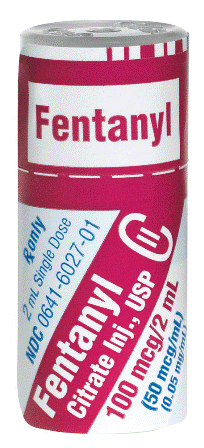“Opioid Analgesic Use and Risk for Invasive Pneumococcal Diseases: A Nested Case–Control Study,” by Dr. Andrew Wiese of Vanderbilt University colleagues, was published in Annals of Internal Medicine March 20.
Nicholas Bakalar summed the study up neatly in the New York Times: “People with invasive pneumonococcal disease disease were 62 percent more likely than those in the control group to be using prescription opioids. The association was strongest for high-potency drugs like oxycodone and for long-acting drugs like fentanyl and methadone.”
Here’s the abstract:
Background:
Although certain opioid analgesics have immunosuppressive properties and increase the risk for infections in animals, the clinical effects of prescription opioid use on infection risk among humans are unknown.Objective:
To test the hypothesis that prescription opioid use is an independent risk factor for invasive pneumococcal disease (IPD).Design:
Nested case–control study.Setting:
Tennessee Medicaid database linked to Medicare and Active Bacterial Core surveillance system databases (1995 to 2014).Patients:
1,233 case patients with IPD aged 5 years and older matched to 24,399 control participants by diagnosis date, age, and county of residence.Measurements:
Opioid use was measured on the basis of pharmacy prescription fills. Invasive pneumococcal disease (IPD) was defined by the isolation of Streptococcus pneumoniae from a normally sterile site. The odds of current opioid use were compared between the case and control groups, accounting for known IPD risk factors. Secondary analyses categorized opioid use by opioid characteristics, applied an IPD risk score to assure comparability between exposure groups, and analyzed pneumonia and nonpneumonia IPD cases separately.Results:
Persons in the case group had greater odds than control participants of being current opioid users (adjusted odds ratio [aOR], 1.62 [95% CI, 1.36 to 1.92]). Associations were strongest for opioids that were long acting (aOR, 1.87 [CI, 1.24 to 2.82]), of high potency (aOR, 1.72 [CI, 1.32 to 2.25]), or were used at high dosages (50 to 90 morphine milligram equivalents [MME]/d: aOR, 1.71 [CI, 1.22 to 2.39]; ≥90 MME/d: aOR, 1.75 [CI, 1.33 to 2.29]). Results were consistent when the IPD risk score was taken into account and pneumonia and nonpneumonia IPD were analyzed separately.Limitations:
Unmeasured confounding and measurement error, although sensitivity analyses suggested that neither was likely to affect results. Actual opioid use and other nonprescription use (such as illicit opioid use) were not measured.Conclusion:
Opioid use is associated with an increased risk for IPD and represents a novel risk factor for these diseases.Primary Funding Source:
National Institutes of Health





